BJS Steel Bar Review
|
I have been using a 5.28 ounce Jim Dunlop chrome plated steel bar for about the last 20 years. As you can see in the pictures, it has the inside
hollowed out and it used to have a red plastic plug in the end of it with the the Jim Dunlop insignia on it. Thinking I ought to splurge a bit and get a spare bar, I opted to purchase a BJS chrome bar which I ordered direct from BJS. There was a 2 month wait for the standard bar so I
had to order the birthstone bar (March for me) if I wanted one right away.
The size of this bar is 7/8" x 3 3/8" (same as my Dunlop), it has a birthstone implanted in the nose, weighs approximately 8.4 ounces, is heat treated, has a hard chrome finish, and cost me $70.00 + $5.50 shipping. I have tried the 15/16" and 1" diameter bars and they are just too big and heavy for my tastes. Click here to go to the BJS web site and view all of their steel guitar bar bar products. After spending a few hours switching back and forth between the Dunlop and BJS bars, the differences in them became very apparent. The BJS bar has quite a bit more sustain than the Dunlop, probably due somewhat to it's increased weight. The Dunlop bar has less drag and a little less sustain than the BJS bar. My experience with hollowed out bars is that they produce a mellower tone and somewhat less sustain than an equivalent sized solid bar. In some sense the tone with the Dunlop bar sounds like you cut the midrange on your amp. The Dunlop bar is great for playing fast and getting the "Mooney" sound, and with adjustments in amp settings, can produce a decent tone to my ears. If you want to have one of your bars drilled out in the center. just drill a 1/2" hole in the center of the bar, 3" deep. I've done this myself and it makes for a great alternative sound. If you've got an old spare bar laying around that you don't use, give this a try! The difference in sustain between the bars is quite large and totally measurable. Plotting the response on my Yamaha music workstation, the Dunlop bar drops from -15 to -36 db in about 6 seconds whereas the BJS bar takes about 8 seconds. It's really easy to hear the difference in sustain without measuring it! Regarding the friction of the bar on the strings, the vintage Dunlop bar has noticeably less drag than the BJS bar on both the plain and stainless steel strings I am using. Even when I add weight to compensate for the differences in weight between the bars, the Dunlop bar is much slicker on the strings. Mind you, I have no idea if the current or recent Dunlop bars are this slick as mine was purchased in 1980. I am not saying the BJS bar has a lot of drag. In fact it has very little drag, but the Dunlop bar just has an unbelievably low coefficient of friction, more so than any bar I have ever picked up although I have only tried chrome plated and stainless bars. The workmanship on the BJS bar is flawless and it does produce a good tone to my ears and it has great sustain. Coupled with the reputation that BJS has for durability, this is a great bar to buy. I find myself using both of these bars equally but I have to admit most people would prefer the BJS due to it's clearer midrange, brighter sound and greater sustain.
I just ordered and received a 15/16" diameter bar from Bill at BJS Steel Bars and I have to eat crow about the 15/16 bar being a bit too heavy. This is the only bar I use now and for a few good reasons. It just fits my hands better for one thing. The bigger size gives me more controllable vibrato and a tad more sustain and clarity over the Dunlop and 7/8" BJS bars. Listen to the song sample I recorded below and hear how clear the very bottom C6 string rings out. At 9.7 ounces, it does have a tad more weight but for slow moves this is not a problem at all. For faster single string moves I tend to tip the back of the bar up and into my palm, using only the tip to play notes. This yields excellent control of the bar and negates any effect of the heavier weight. I Don't Believe I'll Fall In Love Today played with the 15/16" BJS Standard Bar (Solid) (Regular Bar) The last picture below shows the Dunlop, BJS 7/8" and BJS 15/16" bar, left to right.
|
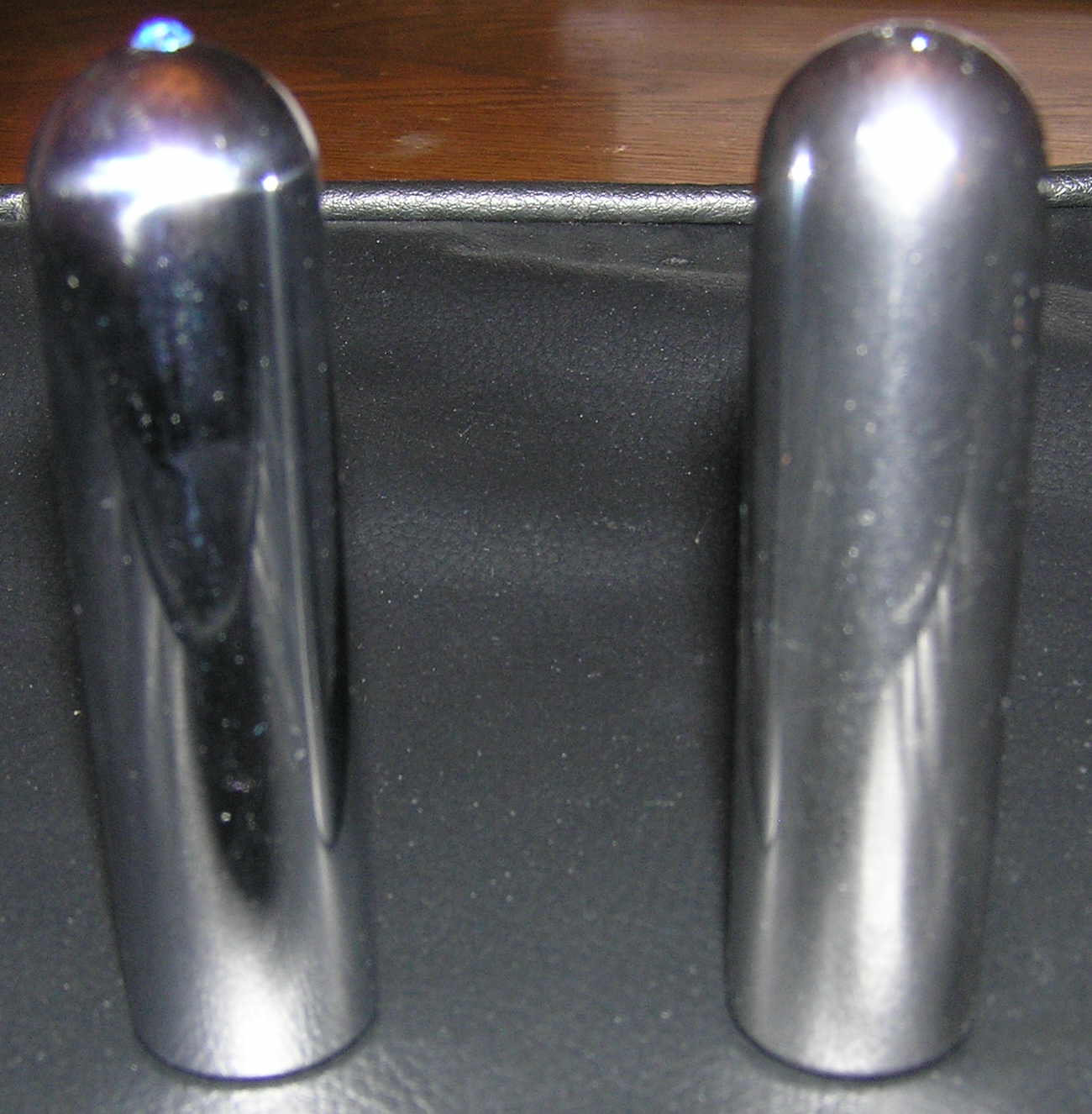
|
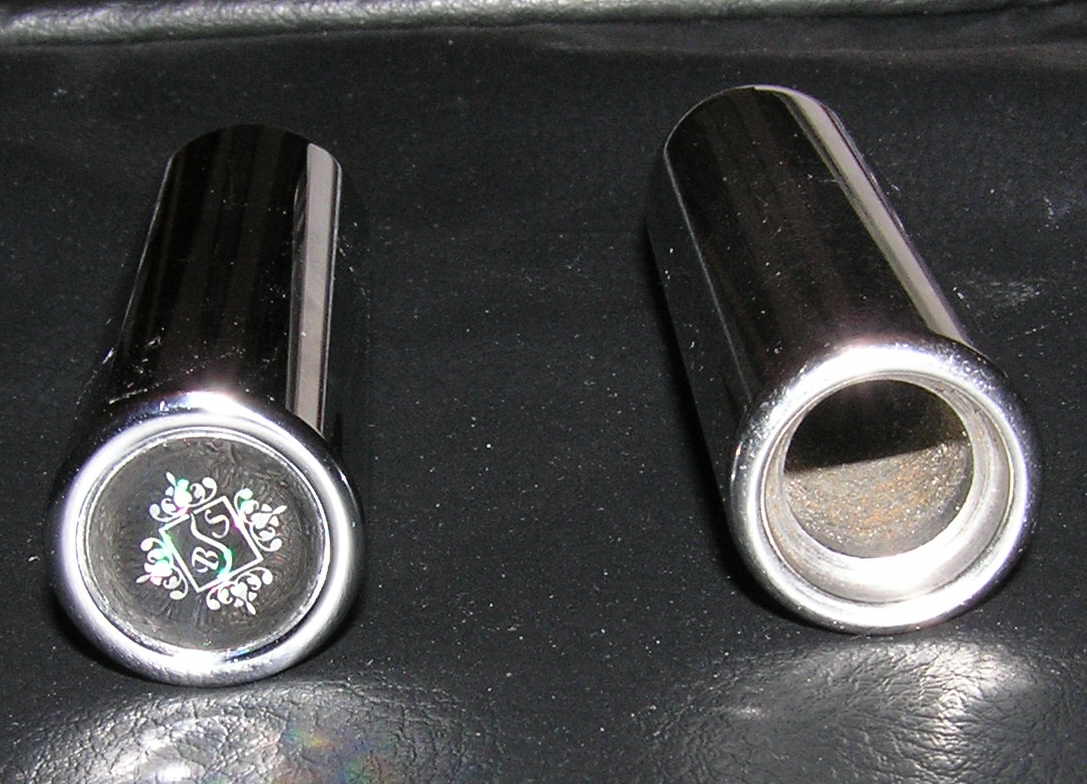 |
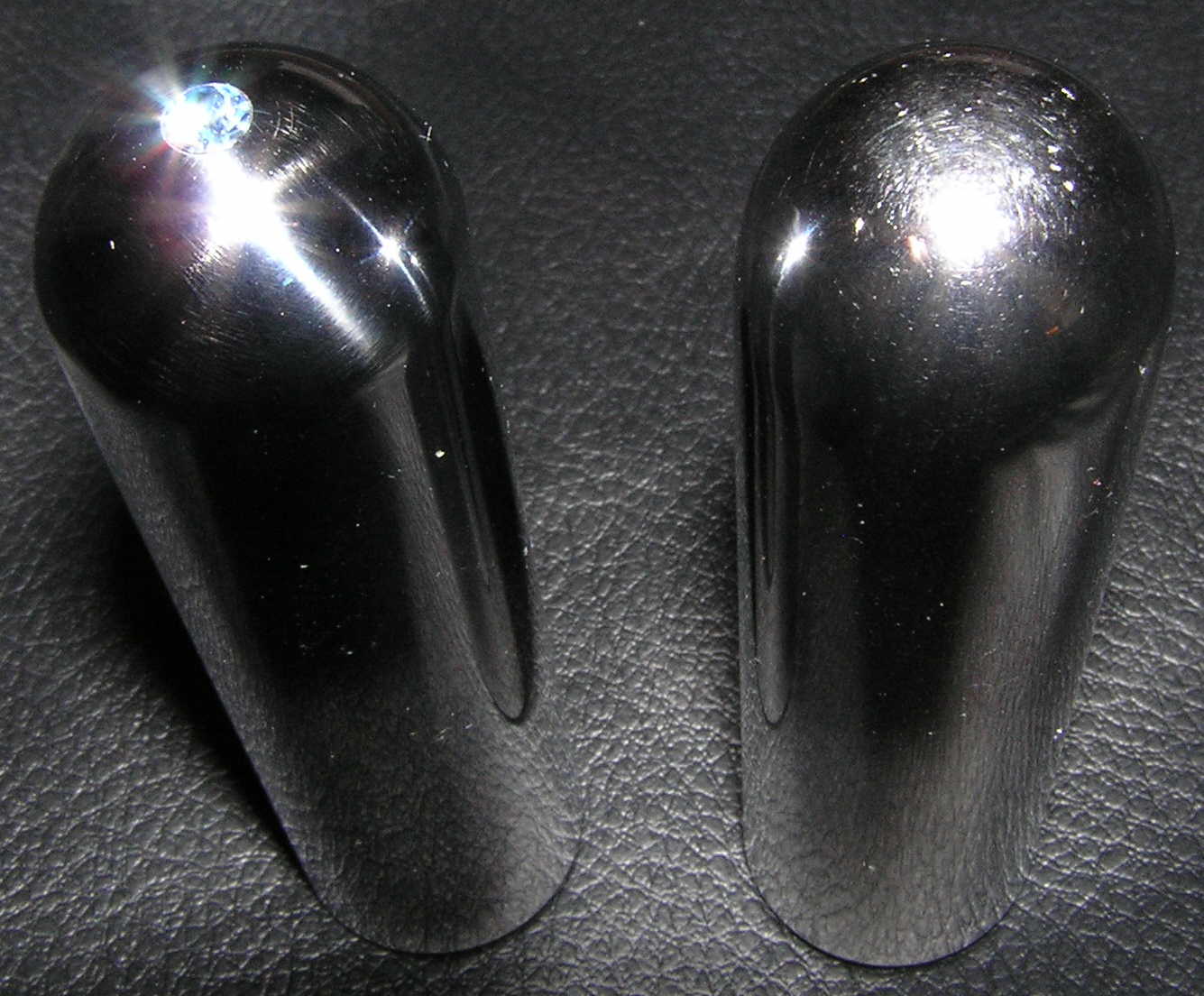 |
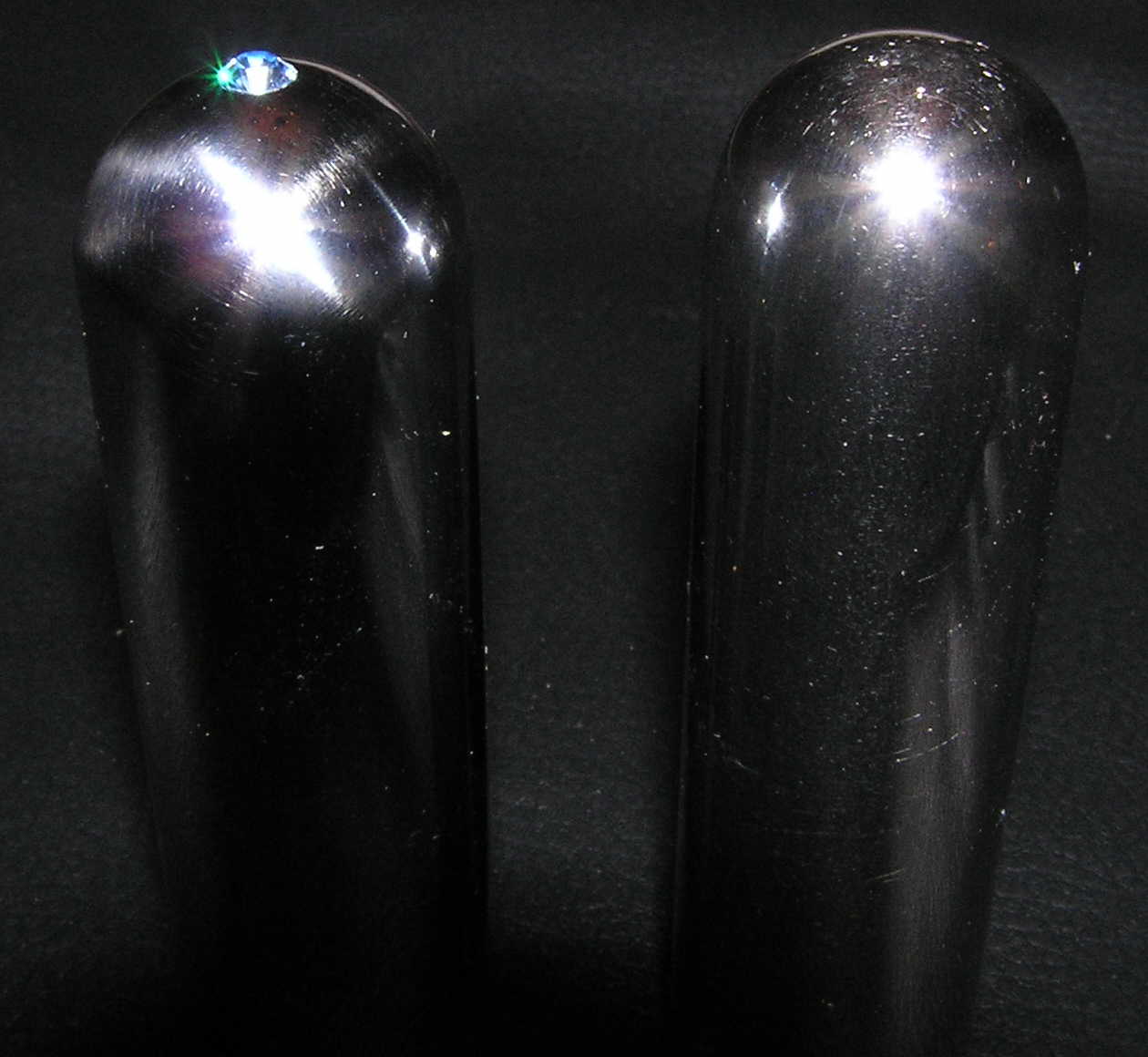 |
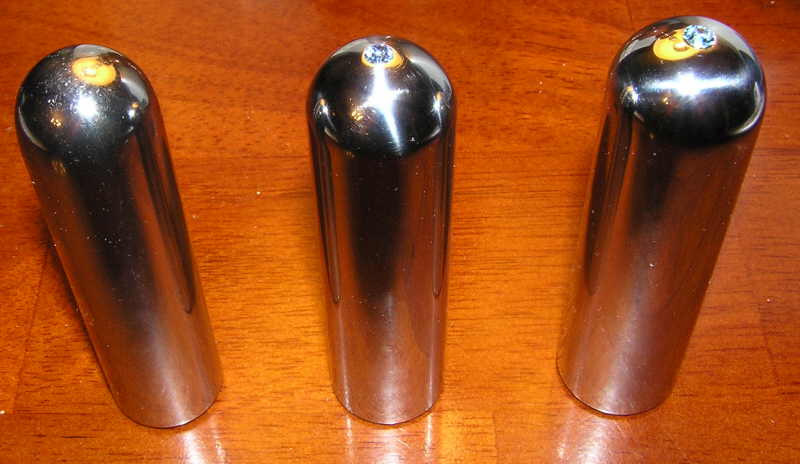 |
Comments? email webmaster Greg ![]()
![]()